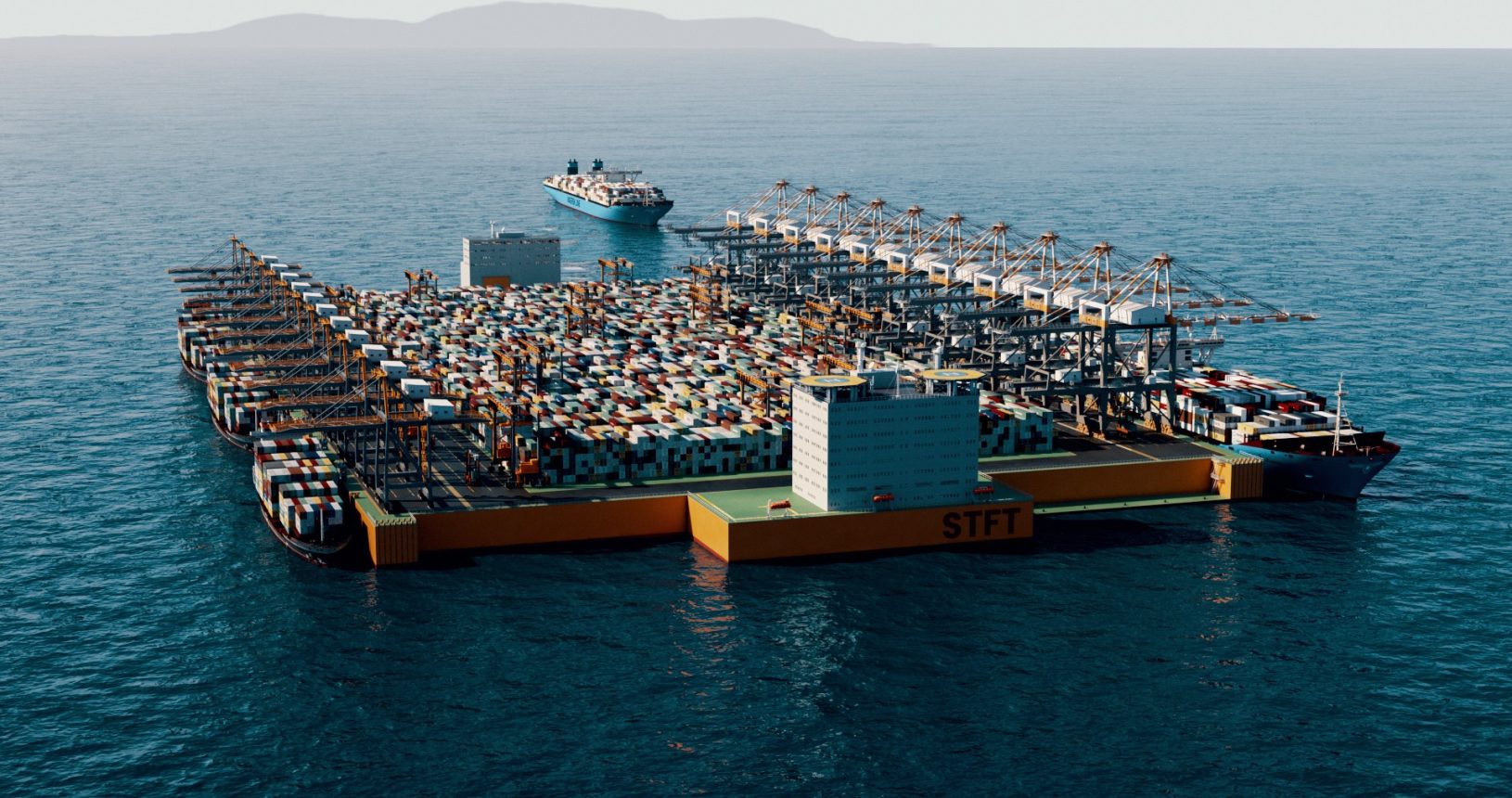The Sea Technology Floating Terminal (STFT) is an innovative floating terminal designed for large container transshipment. It is capable of handling 5-6 million TEU annually
The STFTs, will contribute to a new logistics revolution in the transport system and the growing Blue Ocean Economy. Research and development of floating port terminals has gained momentum based on world trade's need for well-functioning, efficient ports as central logistics nodes. 90 % of handled goods utilize the ocean and the Ultra Large Container Vessels are growing in size. Only 20 ports in the world can handle these large ships causing a very constipated supply chain. With our analysis with the avoided emissions framework, we can reduce the CO2 emissions with up to 70 % - study case a STFT located outside of Gothenburg, and we rerouted 25 % of the container traffic to port of Rotterdam to our floating transshipment terminal. Our solution will significantly reduce the climate footprint of a port and protect sensitive ecosystems while contributing to growing trade volumes.
The financial and environmental cost estimates for port congestion are derived from industry reports and studies that examine the operational impacts of delays in global shipping.
-
Costs of Waiting Time: Various shipping industry reports indicate that operating costs for large container ships, including fuel consumption and crew wages, range from $30,000 to $50,000 per day for smaller vessels and can reach $100,000 for ultra-large container ships (ULCS). For instance, the International Chamber of Shipping and Drewry Maritime Research provide such figures in their reports on shipping economics.
-
Fuel Consumption and Emissions: Research on emissions from large vessels shows that an idle container ship typically burns 80 to 100 metric tons of heavy fuel oil per day, depending on size and operational conditions. Each metric ton of heavy fuel oil burned produces about 3.15 metric tons of CO2. The environmental data are frequently cited in reports by the International Maritime Organization (IMO) and studies from environmental organizations like the International Council on Clean Transportation (ICCT).
-
Emissions per Day: The European Maritime Safety Agency (EMSA) and IMO also highlight that waiting in port areas results in significant emissions of CO2, sulfur oxides (SOx), and nitrogen oxides (NOx), contributing to pollution and environmental damage.
A floating port like the Sea Technology Floating Terminal (STFT) offers a transformative solution to the capacity and energy challenges faced by many developing regions, such as West African countries, where existing infrastructure often struggles to keep up with rising trade demands. Traditional ports in these areas are often limited by shallow waters, insufficient land space, or lack of investment, making large-scale development projects slow, costly, and environmentally damaging.
The STFT adds significant capacity by offering a scalable, turn-key terminal solution that can be deployed quickly in regions where building new land-based ports would be financially and logistically prohibitive. With a modular design, it can handle up to 5 million TEUs annually, reducing strain on existing infrastructure and facilitating increased trade flows, which are essential for economic development in regions like West Africa.
Moreover, the STFT can act as an energy hub in areas with limited energy infrastructure. With integrated freshwater production and waste-to-energy systems, the STFT can produce vital resources like fresh water and renewable energy for both its own operations and the vessels it serves. This is particularly impactful in parts of the world where energy grids are underdeveloped or unreliable. By providing clean, renewable energy and the potential to connect with feeder vessels powered by batteries or alternative fuels, the STFT can significantly reduce dependency on traditional, polluting energy sources. This also opens up opportunities for regional industries—from fishing to waste management—to integrate and benefit from a shared, multifunctional hub that supports both maritime and onshore activities.
In West African nations, where port congestion and inadequate infrastructure frequently slow down economic growth, the STFT can offer an agile and efficient alternative that boosts trade capacity, reduces logistical bottlenecks, and minimizes environmental impacts, all while promoting sustainable energy use. The ability to deploy the STFT without extensive dredging, land reclamation, or lengthy construction timelines allows developing regions to expand capacity rapidly and tap into global trade networks more effectively.
The floating terminals can also solve challenges for other industires such as floating nulclar plants and the Cruise industy.




